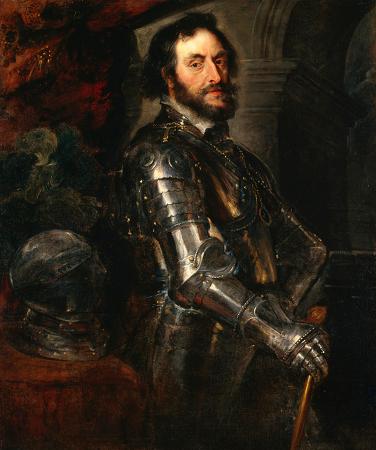Thomas Howard, 21st Earl of Arundel (c1585 - 1646). Thomas Howard, 14th Earl of Arundel KG, was a prominent English courtier during the reigns of King James I and King Charles I, but he made his name as a Grand Tourist and art collector rather than as a politician. When he died he possessed 700 paintings, along with large collections of sculpture, books, prints, drawings, and antique jewellery. Most of his collection of marble carvings, known as the Arundel marbles, was eventually left to the University of Oxford. He is sometimes referred to as the 21st Earl of Arundel, ignoring the supposed second creation of 1289, or the 2nd Earl of Arundel, the latter numbering depending on whether one views the earldom obtained by his father as a new creation or not. He was also 2nd or 4th Earl of Surrey; and was later created 1st Earl of Norfolk. He is also known as the Collector Earl. Arundel was born in relative penury, at Finchingfield in Essex on 7 July 1585. His aristocratic family had fallen into disgrace during the reign of Queen Elizabeth I owing to their religious conservatism and involvement in plots against the Queen. He was the son of Philip Howard, 13th Earl of Arundel, and Anne Dacre, daughter and co-heiress of Thomas Dacre, 4th Baron Dacre of Gilsland. He never knew his father, who was imprisoned before Arundel was born, and owing to his father's attainder he was initially styled Lord Maltravers. Arundel's great-uncles returned the family to favour after James I ascended the throne, and Arundel was restored to his titles and some of his estates in 1604. Other parts of the family lands ended up with his great-uncles. The next year he married Lady Alatheia Talbot, a daughter of Gilbert Talbot, 7th Earl of Shrewsbury, and a granddaughter of Bess of Hardwick. She would inherit a vast estate in Nottinghamshire, Yorkshire, and Derbyshire, including Sheffield, which has been the principal part of the family fortune ever since. Even with this large income, Arundel's collecting and building activities would lead him heavily into debt. Arundel was an effective diplomat during the reign of James I. After coming to court, he travelled abroad, acquiring his taste for art. He was created Knight of the Garter in 1611. In 1613 he escorted Elizabeth, the electress consort Palatine, to Heidelberg as part of her marriage celebrations, and again visited Italy. On Christmas day 1615 he joined the Church of England, and took office, being appointed a Privy Councillor in 1616. He supported Sir Walter Raleigh's expedition to Guiana in 1617, became a member of the New England Plantations Committee in 1620 and planned the colonization of Madagascar. Arundel presided over the House of Lords Committee in April 1621 for investigating the corruption charges against Francis Bacon, whom he defended from degradation from the peerage, and at whose fall he was appointed a commissioner of the Great Seal. On 16 May 1621 he was briefly sent to the Tower of London by the Lords on account of insulting Baron Spencer by referring to their respective ancestry. He then incurred Prince Charles's and the Duke of Buckingham's anger by his opposition to the war with Spain in 1624, and by his share in the duke's impeachment. On the marriage of his son Henry to Lady Elizabeth Stewart without the king's approval, he was imprisoned in the Tower by Charles I, shortly after his accession, but was released at the instance of the Lords in June 1626, being again confined to his house till March 1628, when he was once more liberated by the Lords. In the debates on the Petition of Right, while approving its essential demands, he supported the retention of some discretionary power by the king in committing to prison. The same year he was reconciled to the king and again made a privy councillor. On 29 August 1621 Arundel had been appointed Earl Marshal, and in 1623 Constable of England, in 1630 reviving the earl marshal's court. He was sent to The Hague in 1632 on a mission of condolence to Elizabeth Stuart, recently Queen of Bohemia, on her husband's death. In 1634 he was made justice in eyre of the forests north of the Trent; he accompanied Charles the same year to Scotland on the occasion of his coronation. In 1635 he was made Lord Lieutenant of Surrey. In 1636 Arundel undertook an unsuccessful mission to the emperor Ferdinand II to procure the restitution of the Palatinate to the young elector. In 1638 he was entrusted with the charge of the forts on the border with Scotland, and, supporting alone amongst the peers the war against the Scots, was made general of the king's forces in the first Bishops' War, though he had nothing martial about him but his presence and looks.
more...




